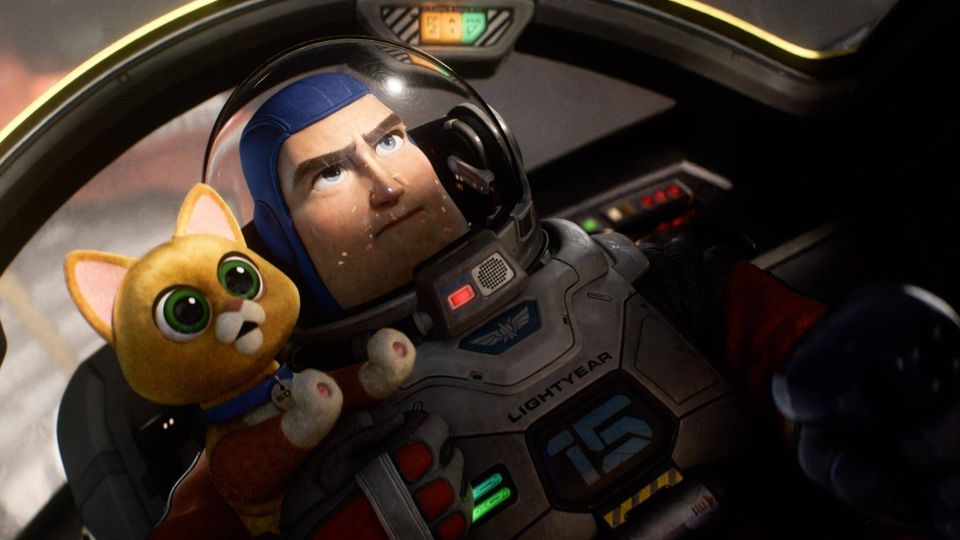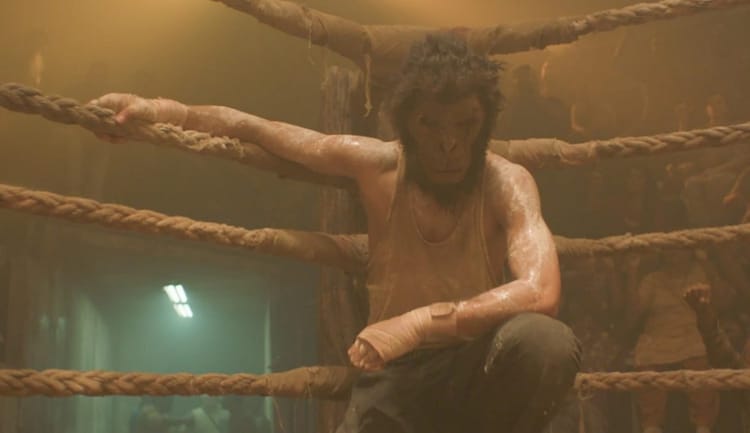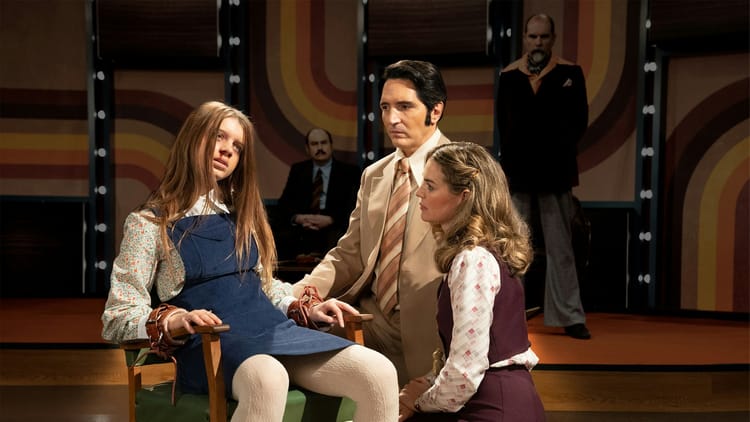Lightyear

I didn’t think I would watch “Lightyear.” I had no desire to understand the origin story behind Buzz Lightyear, which I already vaguely remember from the Disney cartoon. And beyond that, I have no interest in any origin story of late. I was not remotely interested in how Han Solo got his name. I was even less interested when the movie “Solo: A Star Wars Story” revealed that he got the name because he was flying on a passenger spaceship alone. a.k.a. Flying solo. Hence … Han Solo. Riveting stuff.
When Pixar announced “Lightyear,” I predicted more meaningless worldbuilding, filling in answers to questions that nobody had. I thought I would skip it.
Then fourteen countries banned it from airing in their territories because it promoted the LGBTQ lifestyle.
For the last few years, Disney has tried to push the envelope slightly on gay representation in their films. And in most cases, it’s been a missable line of dialogue like in “Avengers: Endgame,” or in one shot of a montage that can easily be cut like in “Star Wars: The Rise of Skywalker.” The operating principle, to my eye, has been to include gayness as lightly as they can, so that if there’s any pushback from any international censors, they can easily edit it out of the film.
But on “Lightyear,” Disney put their foot down. They said they wouldn’t cut the scene. “Lightyear” is then banned in 14 countries, not including Singapore, my home country, which has labeled the film as NC-16 since “the depictions of the character’s alternative sexuality and relationship, while brief, are more appropriate for viewers 16 years and above.”
And so, I found myself with a friend from Malaysia, where “Lightyear” is completely banned, sitting in the cinema, during Pride Month no less, waiting for Pixar’s newest movie to start. Because somehow, under these bizarre conditions, global circumstances and an ongoing “culture war” have made the world’s biggest entertainment company the underdog. And that just barely outweighed my reluctance to watch yet another origin movie.
And to its credit, “Lightyear” is pretty serviceable as far as origin movies go. It doesn’t rely on its source material to lift its own story. The film is pretty keen on making an action-adventure movie for kids that doesn’t need any other content to be enjoyable. Unlike most other blockbusters, it doesn’t actually need you to have seen two other movies or a TV show to understand or enjoy it.
It’s telling that the bar is so low, that what I’ve just said can count as praise.
“Lightyear” avoids the pitfalls of the other origin stories by not trying to explore lingering mysteries or resolve plot holes that aren’t of great interest. Instead, it fixates on the character of Buzz Lightyear, as we know him from this film: proud, stubborn, and self-reliant to a fault. This being a kid’s movie, you can expect all of these flaws to be addressed by its ending.
Joining Buzz on his quest are four other adventurers/sidekicks. The best of the four is Sox, Buzz’s animatronic feline companion, voiced by Peter Sohn. Sox is surprisingly delightful, who despite my most curmudgeonly tendencies, was still amusing and likable. In fact, I can say that when Sox was in peril, I gasped against my own will. That is the ultimate testament to the quality of a fuzzy cutesy sidekick if the film can actually make me, with my Grinch-like perspective, care.
The worst of the four is the bumbling Mo, played by Taika Waititi. A central theme of the movie is that mistakes don’t define you. But Mo in almost every scene sets back the squad through his clumsiness, making that message harder to accept. We start to empathize a little bit too much with Buzz’s perfectionism, if the alternative is Mo.
This may be Pixar’s most action-oriented movie yet, more in-line with “The Incredibles 2” than with “Inside Out.” There are some good action sequences in there, but, and I’m not only saying this because I love Tom Cruise, but all of them are middling compared to “Top Gun: Maverick.” You may say it’s like comparing live-action apples to animated oranges, but anyone who sees both of these films will find them alarmingly similar, in character, theme, and occasionally, outright full scenes. It’s sheer coincidence that their release windows are so close together and “Maverick” benefits more from the comparison than “Lightyear.”
That type of similarity brings me to my biggest criticism. “Lightyear” follows the Pixar house-style: sleekly animated, large heads, expressive character design. But it is entirely uninterested in its self-declared reason for existing.
The movie’s opening text tells us:
“In 1995, Andy got a toy from his favorite movie. This is that movie.”
And that had me thinking the film would make some attempt to pay homage or parody the kids films of the ’90s. It makes no effort to do so. It belongs distinctly to the 2020s — the same color palette of space of every Star Wars show on Disney +, the same story beats of “Big Hero Six,” the same quips of the MCU. None of this is particularly offensive on its own. But they leave a sour taste in the mouth when combined with the film’s claim that it’s not of this era. It is as 2022 as every other kid movie out there, only slightly less so than “Paws of Fury: The Legend of Hank”, a movie I am convinced is a hate crime, a money-laundering scheme, Paramount’s revenge for no one watching “The Adventures of Tintin,” or all of the above.
You’ll notice that I haven’t talked about the gay elephant in the room. That’s because there’s not much to say. Buzz’s best friend is married to another woman and that’s about it. That’s not a criticism. That’s how it is. And frankly, it’s sad that this is contestable.
It’s finally starting to feel like Disney has moved beyond tokenism, starting with Brian Tyree Henry’s character in “The Eternals” and now with “Lightyear.” But it turns out there are still some things even corporations can’t achieve. So we’re stuck in a conundrum, trying to pick between the lesser of two evils. Do we support Disney’s attempts at representation, which will do about as much to ending homophobia as metal straws combat the climate crisis? Must we align with Disney and watch this movie to prevent conservatives from connecting its financial performance to its lesbian mothers? Are we so limited by this system that the only way to engage with the “culture war” is to pay money to see an origin story of a fictional toy from a different movie?
All of these questions, I think, are more remarkable than “Lightyear.” It’s not a bad movie. It’s not particularly exciting either. It may be fun for kids and a passable treat for the “Toy Story” millennial. And really, it’s not worth its weight in controversy. It’s just another passable origin movie that happens to have a pretty cool cat.
---
This piece was first published on FNews Magazine, and was edited by Parker Yamasaki.




